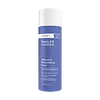What's inside
What's inside
 Key Ingredients
Key Ingredients

 Benefits
Benefits

 Concerns
Concerns

 Ingredients Side-by-side
Ingredients Side-by-side

Water
Skin ConditioningCyclopentasiloxane
EmollientGlycerin
HumectantGlycereth-26
HumectantPolysorbate 20
EmulsifyingDimethiconol
EmollientLinoleic Acid
CleansingOleic Acid
EmollientLinolenic Acid
CleansingPhospholipids
Skin ConditioningCarnosine
Skin ConditioningEpigallocatechin Gallate
AntioxidantGenistein
Skin ConditioningSodium Hyaluronate
HumectantSphingolipids
EmollientFerulic Acid
AntimicrobialLaurdimonium Hydroxypropyl Hydrolyzed Soy Protein
Glycyrrhiza Glabra Root Extract
BleachingAcetyl Glucosamine
Skin ConditioningQuercetin
AntioxidantOenothera Biennis Oil
EmollientBeta Vulgaris Root Extract
Skin ConditioningCucurbita Pepo Seed Extract
Skin ConditioningLecithin
EmollientCaprylic/Capric Triglyceride
MaskingHydrolyzed Corn Starch
HumectantHydrogenated Lecithin
EmulsifyingPalmitic Acid
EmollientButylene Glycol
HumectantAcrylates/C10-30 Alkyl Acrylate Crosspolymer
Emulsion StabilisingXanthan Gum
EmulsifyingLaureth-23
CleansingLaureth-4
EmulsifyingAminomethyl Propanol
BufferingDisodium EDTA
Sodium Benzoate
MaskingEthylhexylglycerin
Skin ConditioningPhenoxyethanol
PreservativeChlorphenesin
AntimicrobialBenzoic Acid
MaskingSorbic Acid
PreservativeWater, Cyclopentasiloxane, Glycerin, Glycereth-26, Polysorbate 20, Dimethiconol, Linoleic Acid, Oleic Acid, Linolenic Acid, Phospholipids, Carnosine, Epigallocatechin Gallate, Genistein, Sodium Hyaluronate, Sphingolipids, Ferulic Acid, Laurdimonium Hydroxypropyl Hydrolyzed Soy Protein, Glycyrrhiza Glabra Root Extract, Acetyl Glucosamine, Quercetin, Oenothera Biennis Oil, Beta Vulgaris Root Extract, Cucurbita Pepo Seed Extract, Lecithin, Caprylic/Capric Triglyceride, Hydrolyzed Corn Starch, Hydrogenated Lecithin, Palmitic Acid, Butylene Glycol, Acrylates/C10-30 Alkyl Acrylate Crosspolymer, Xanthan Gum, Laureth-23, Laureth-4, Aminomethyl Propanol, Disodium EDTA, Sodium Benzoate, Ethylhexylglycerin, Phenoxyethanol, Chlorphenesin, Benzoic Acid, Sorbic Acid
Water
Skin ConditioningPentylene Glycol
Skin ConditioningGlycerin
HumectantPropanediol
SolventC13-15 Alkane
SolventPanthenol
Skin ConditioningPolyglyceryl-6 Oleate
EmulsifyingCeteth-20 Phosphate
CleansingSodium PCA
HumectantOphiopogon Japonicus Root Extract
Skin ConditioningAmmonium Polyacryloyldimethyl Taurate
Emulsion StabilisingCetearyl Alcohol
EmollientAllantoin
Skin ConditioningSodium Hyaluronate
HumectantDicetyl Phosphate
EmulsifyingMaltodextrin
AbsorbentAlthaea Officinalis Root Extract
Skin ConditioningEthylhexylglycerin
Skin ConditioningSodium Phytate
Pantolactone
HumectantPhenoxyethanol
PreservativeWater, Pentylene Glycol, Glycerin, Propanediol, C13-15 Alkane, Panthenol, Polyglyceryl-6 Oleate, Ceteth-20 Phosphate, Sodium PCA, Ophiopogon Japonicus Root Extract, Ammonium Polyacryloyldimethyl Taurate, Cetearyl Alcohol, Allantoin, Sodium Hyaluronate, Dicetyl Phosphate, Maltodextrin, Althaea Officinalis Root Extract, Ethylhexylglycerin, Sodium Phytate, Pantolactone, Phenoxyethanol
 Reviews
Reviews

Ingredients Explained
These ingredients are found in both products.
Ingredients higher up in an ingredient list are typically present in a larger amount.
Ethylhexylglycerin (we can't pronounce this either) is commonly used as a preservative and skin softener. It is derived from glyceryl.
You might see Ethylhexylglycerin often paired with other preservatives such as phenoxyethanol. Ethylhexylglycerin has been found to increase the effectiveness of these other preservatives.
Glycerin is already naturally found in your skin. It helps moisturize and protect your skin.
A study from 2016 found glycerin to be more effective as a humectant than AHAs and hyaluronic acid.
As a humectant, it helps the skin stay hydrated by pulling moisture to your skin. The low molecular weight of glycerin allows it to pull moisture into the deeper layers of your skin.
Hydrated skin improves your skin barrier; Your skin barrier helps protect against irritants and bacteria.
Glycerin has also been found to have antimicrobial and antiviral properties. Due to these properties, glycerin is often used in wound and burn treatments.
In cosmetics, glycerin is usually derived from plants such as soybean or palm. However, it can also be sourced from animals, such as tallow or animal fat.
This ingredient is organic, colorless, odorless, and non-toxic.
Glycerin is the name for this ingredient in American English. British English uses Glycerol/Glycerine.
Learn more about GlycerinPhenoxyethanol is a preservative that has germicide, antimicrobial, and aromatic properties. Studies show that phenoxyethanol can prevent microbial growth. By itself, it has a scent that is similar to that of a rose.
It's often used in formulations along with Caprylyl Glycol to preserve the shelf life of products.
Sodium Hyaluronate is hyaluronic acid's salt form. It is commonly derived from the sodium salt of hyaluronic acid.
Like hyaluronic acid, it is great at holding water and acts as a humectant. This makes it a great skin hydrating ingredient.
Sodium Hyaluronate is naturally occurring in our bodies and is mostly found in eye fluid and joints.
These are some other common types of Hyaluronic Acid:
Learn more about Sodium HyaluronateWater. It's the most common cosmetic ingredient of all. You'll usually see it at the top of ingredient lists, meaning that it makes up the largest part of the product.
So why is it so popular? Water most often acts as a solvent - this means that it helps dissolve other ingredients into the formulation.
You'll also recognize water as that liquid we all need to stay alive. If you see this, drink a glass of water. Stay hydrated!
Learn more about Water